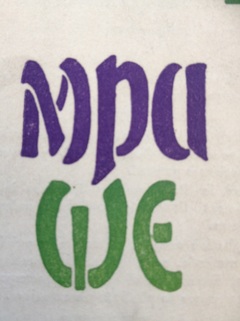2. Male support for Votes for WomenIn the film 'Suffragette' the character of Hugh Ellyn, played by Finbar Lynch, is described by the policemen watching his property as being part of the 'Men's League.' Married to a known militant, he has apparently previously been imprisoned for his role in the suffrage campaign, and we see him in the film helping the WSPU to organise and carry out violent militant actions. Although we never get to hear any of his story, it's good to have acknowledgement of the male support for suffrage in the film - as it's an important part of the history of the campaign. It's not made clear in the film or production notes, but I reckon, given his militant leanings, Lynch's character is most likely to have been part of the Men's Political Union for Women's Enfranchisement (MPU). The MPU was directly affiliated with the WSPU, the society featured in the film 'Suffragette,' and shared their colours of purple, white and green. As well as their headquarters near Charing Cross Station in London, they had a number of regional branches across the UK, including in Eastbourne, Birmingham and Letchworth and at both Oxford and Cambridge Universities. One branch, in East Grinstead, was apparently "actually the outcome of an anti-suffrage meeting there... One gentleman was so struck with the feebleness of the arguments that he proceeded to found a branch of the Men's League."
1 Comment
Seen the Suffragette film and interested in finding out a bit more about the stories it tells? Well, hello! 1. Police Surveillance PhotosIn the Suffragette film, we see police taking and collating surveillance pictures of suspected militant women both out in public and whilst they are in prison. As violent direct action became more frequent, surveillance of militant women and their networks by police increased. The photographs could then be circulated not only to police forces up and down the country but also to potential sites of protest, like galleries, so that known militants could be refused access.
The women in the pictures below include Mary Richardson (no. 11) who slashed the Rokeby Venus in the National Gallery in 1914 in protest at the treatment of Emmeline Pankhurst in prison, and Kitty Marion (no. 13) a music hall performer and member of the Actresses' Franchise League. It's curious that Marion's publicity photograph has been used here - there are other pictures of her taken by press and police photographers that could have been used but perhaps this full face image was thought more valuable. |
NaomiThoughts, reflections, bits of research Archives
April 2023
Categories
All
|

 RSS Feed
RSS Feed